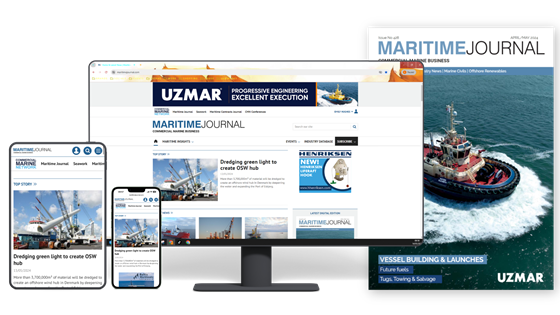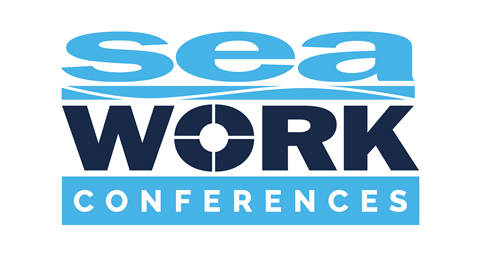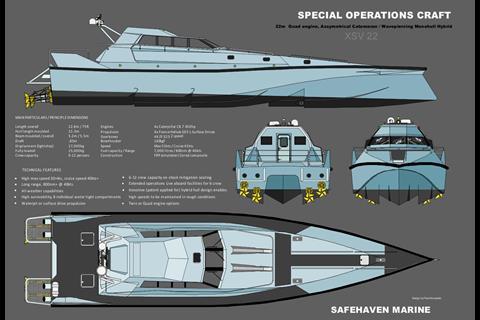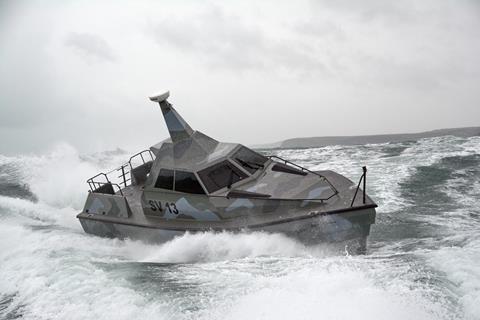SafehavenMarine are developing a new model to add to their extensive range of commercial and naval craft: ‘XSV20’. The design is a high speed patrol / S.A.R and interceptor with a moulded lengthof 21.5m and a LOA of 23m (75ft).
The hull design is extremely innovative (Patent applied for) and
seamlessly fuses a twin stepped asymmetrical catamaran hull form with a wave piercing monohull,
to create a hybrid design that delivers the rough weather and high speed dynamic transverse
stability of a catamaran, with the steep head sea capabilities of a deep V monohull. The hull mould is
now completed following a 6mth R&D programme, during which Safehaven built 12 scale model
variants which were extensively tank tested to optimise the designs performance characteristics and
hydrodynamics.
The first of class XSV20 demonstrator currently due to commence construction will be Powered by
four Caterpillar C8.7 650hp engines, ZF gearboxes and France Helises SDS surface drives, she is
projected to have a maximum speed well over 50kts, a 40kts+ cruise speed and a range of 800nm.
The design incorporates all the features of Safehaven’s smaller 11-17m Barracuda range of naval
craft, with greater endurance, payload and crew capacity. The design has been developed, as
Safehaven’s designer and MD Frank Kowalski succinctly puts it ‘In ones endless pursuit of travelling
fast in rough seas’ and should allow higher speeds to be maintained in rough sea conditions with
greater crew comfort and safety than many conventional designs. With the demonstrator due for
launch very early next year we expect to see some of Safehaven’s usual extreme testing ahead of
some challenging proof of design endeavours. If the hull performs as well as their model testing
predicts, and looks as good as the initial design impressions show, it should be a pretty amazing
craft. Watch this space!
Extensive scale model testing was carried out by Safehaven during the R&D of the design, over 12
separate models were built and tested to refine and optimise the unique hull designs
hydrodynamics, these included hydrofoil versions and the chosen stepped hull version which proved
complex, necessitating 5 different models to determine the optimum step placement and
configuration. Although a stepped hull version has been chosen for their demonstrator to work with
surface drives, the steps are a plant in the mould, allowing waterjets to be used in future versions,
















